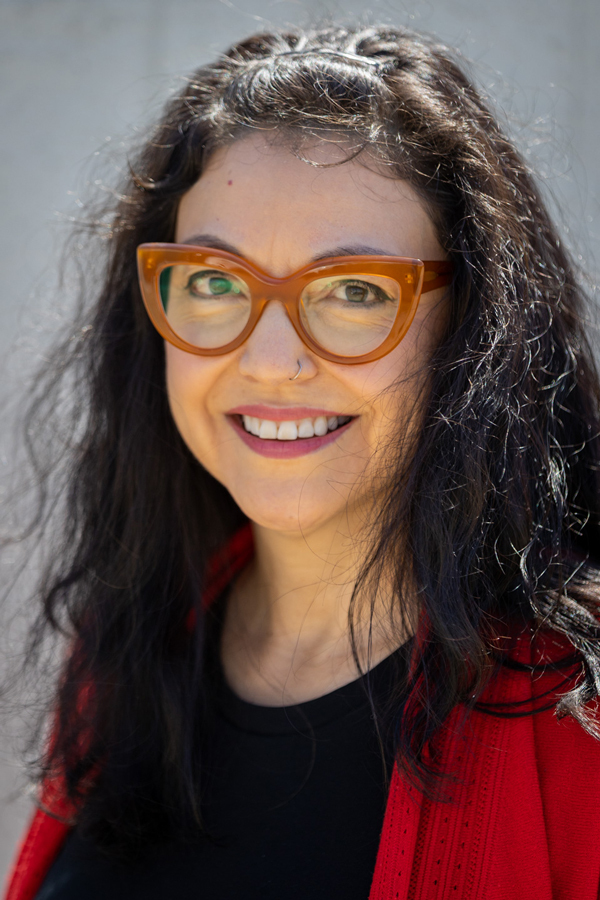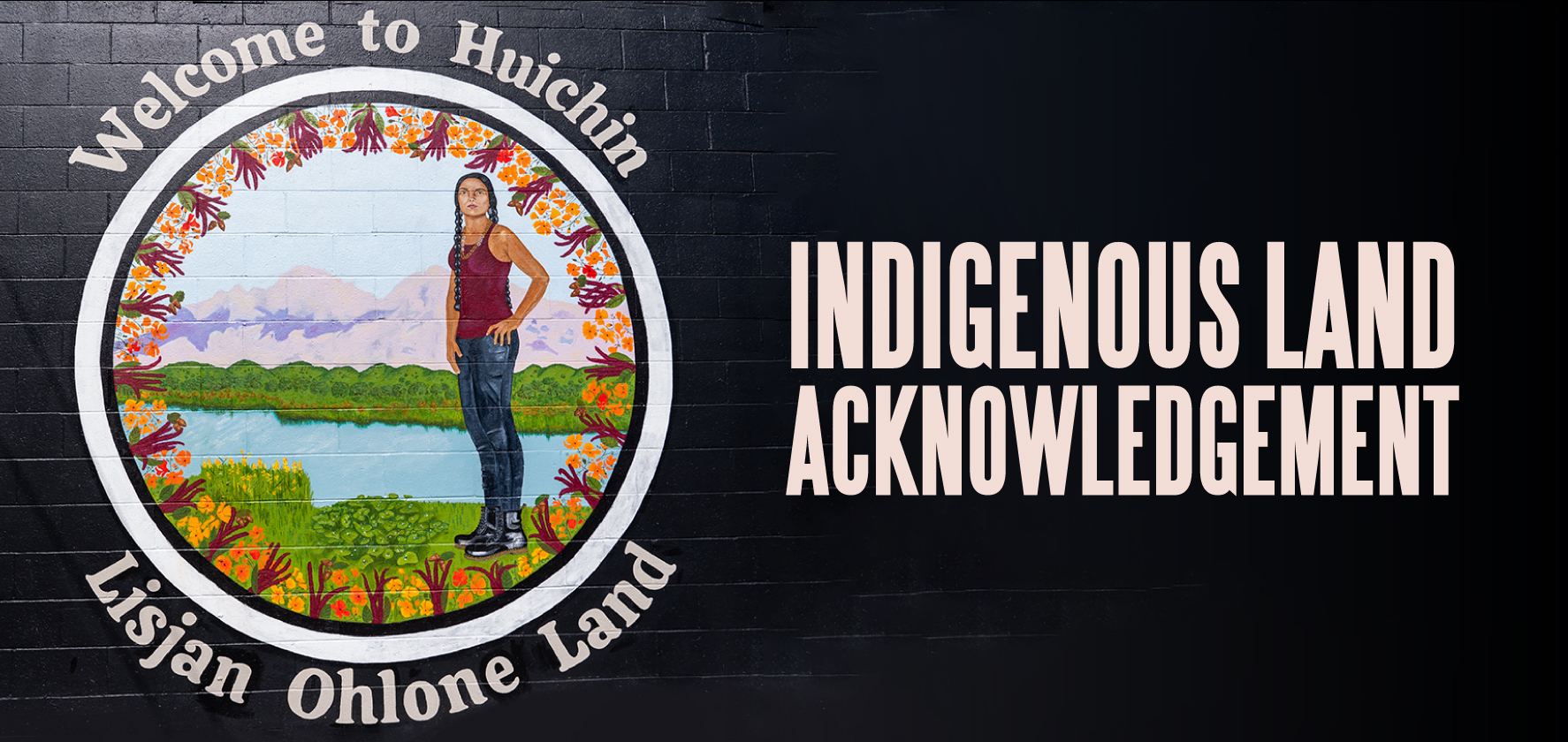Land Acknowledgement
"We believe that much of the pain our country is wrestling with right now stems from America's avoidance and ignorance of past wrongs. Just like any relationship, true healing can only begin where there have been heartfelt amends and work to repair the broken trust. This acknowledgement and support of the Land Tax are our first steps in that journey." - Patrick Dooley, Founding Artistic Director
In the spirit of humility and respect, we request that you join us in acknowledging that the land beneath this theatre and our studios and throughout the East Bay, is Huchiun [who-CHIN], the traditional, unceded land of the Lisjan [lih-SHAWN], Ohlone people.
This land was taken by force by Spanish, Mexican and U.S. armies and militias. Because we make theatre that calls us to reexamine our lives and the world around us, we believe it’s important to acknowledge this truth so everyone who lives here can think about what it means to benefit from this legacy. Sitting with this knowledge can be uncomfortable. One way to move towards a place of healing is to join in the work of restorative justice. Our company is taking direct action by paying our Shuumi Land Tax. “Shuumi” means “gift” in Chochenyo, the language of the Lisjan [lih-SHAWN]. The funds from the Shuumi Land Tax are used to facilitate the return of Bay Area native land to Indigenous stewardship and to help revitalize rich cultural practices and spiritual traditions that were lost in colonization.
To learn more about the work led by the urban, Indigenous women of the Sogorea Te’ Land Trust, and support the Native communities who still live on this land, please visit sogoreate-landtrust.org
If you have any questions or thoughts about this land acknowledgment, please email us at: feedback@shotgunplayers.org
Land Acknowledgement Mural
In recognition of this history, in 2020 Shotgun reached out to Sogorea Te’ Land Trust for guidance on our land acknowledgement statement.
Our Land Acknowledgement Statement inspired a larger conversation about how to create visibility and action for the local indigenous community. Thus the concept of a mural was born, as a way to create a highly visible public and creative invitation to our local community to learn more about the indigenous legacy of the land and how to support current local rematriation efforts. Along the way we’ve shared information and history of the Lisjan people past and present, and invite everyone to do the same.
We're proud to partner with local artist Geralyn Montano on a new neighborhood placemaking mural to illustrate our indigenous land acknowledgement. The public art mural is being installed outside on the west wall of The Ashby Stage, highly visible to both pedestrians and passing motorists. The building, located across the street from Ashby BART, is in South Berkeley’s Lorin District, one of the most diverse, artistic, and transit accessible commercial districts in the City of Berkeley and the traditional Lisjan Ohlone territory of Huchiun.
To learn more about the mural artist go to geralynmontano.com
We also want to thank Littlefield Murals for lettering around the land acknowledgement mural.
About the Artist

Geralyn Montano was born in Colorado to a Dineh (Navajo) father and mother with French, Spanish, Comanche, and Pueblo ancestry. Her mother recently discovered she is related to Albert Looking Elk Martinez, the first renowned oil painter of Taos Pueblo.
Montano has had a passion for art making since she was young. She received her formal art education from the San Francisco Art Institute, graduating with a BFA in interdisciplinary arts including drawing, painting, and sculpture.
Montano has a strong interest in working with under-represented members of her community. She has volunteered with Spark, a program for mentoring middle school students in need of additional resources to support their exploration of careers, where she taught drawing and sculpture. She has also volunteered in domestic violence shelters and taught art workshops at a Bay Area trafficking survivor shelter for women. Montano is currently a visual art instructor for developmentally disabled adults. Montano’s work is inspired by her heritage and personal experience. Her art practice is informed by exploration in Native American contemporary issues related to intergenerational adversity. Her Dineh grandfather’s New Mexico boarding school experience, and her parents’ loss of culture through oppressive assimilation, sparked her interest in researching Native American culture and traditions. She explores historical and contemporary issues using art as a tool to deconstruct colonial patriarchy and celebrate resilient matriarchy. Montano’s work juxtaposes aesthetic qualities with subversive imagery, never shying away from controversial or provocative subjects.
Her work has been exhibited at The Autry Museum of the American West, Crocker Art Museum, Movimiento de Arte y Cultura Latino Americana of San Jose, The Mexican Museum of San Francisco, Contemporary Jewish Museum, San Francisco Arts Commission Gallery, Galeria de la Raza, Incline Gallery, San Francisco ARC Gallery, Humboldt State University Goudi’ni Gallery, San Francisco State University Gallery, Luggage Store Gallery, and University of San Francisco Thacher Gallery.
Montano’s work is in numerous private collections, the collection of the Stanford University and the collection of the Crocker Art Museum of Sacramento. She has been interviewed on public radio, written about by Journalist Rose Arietta for “In These Times” and, most recently, featured with an interview by Jean Merz-Edwards in “First American Art Magazine.






